Jeep Wrangler Generations
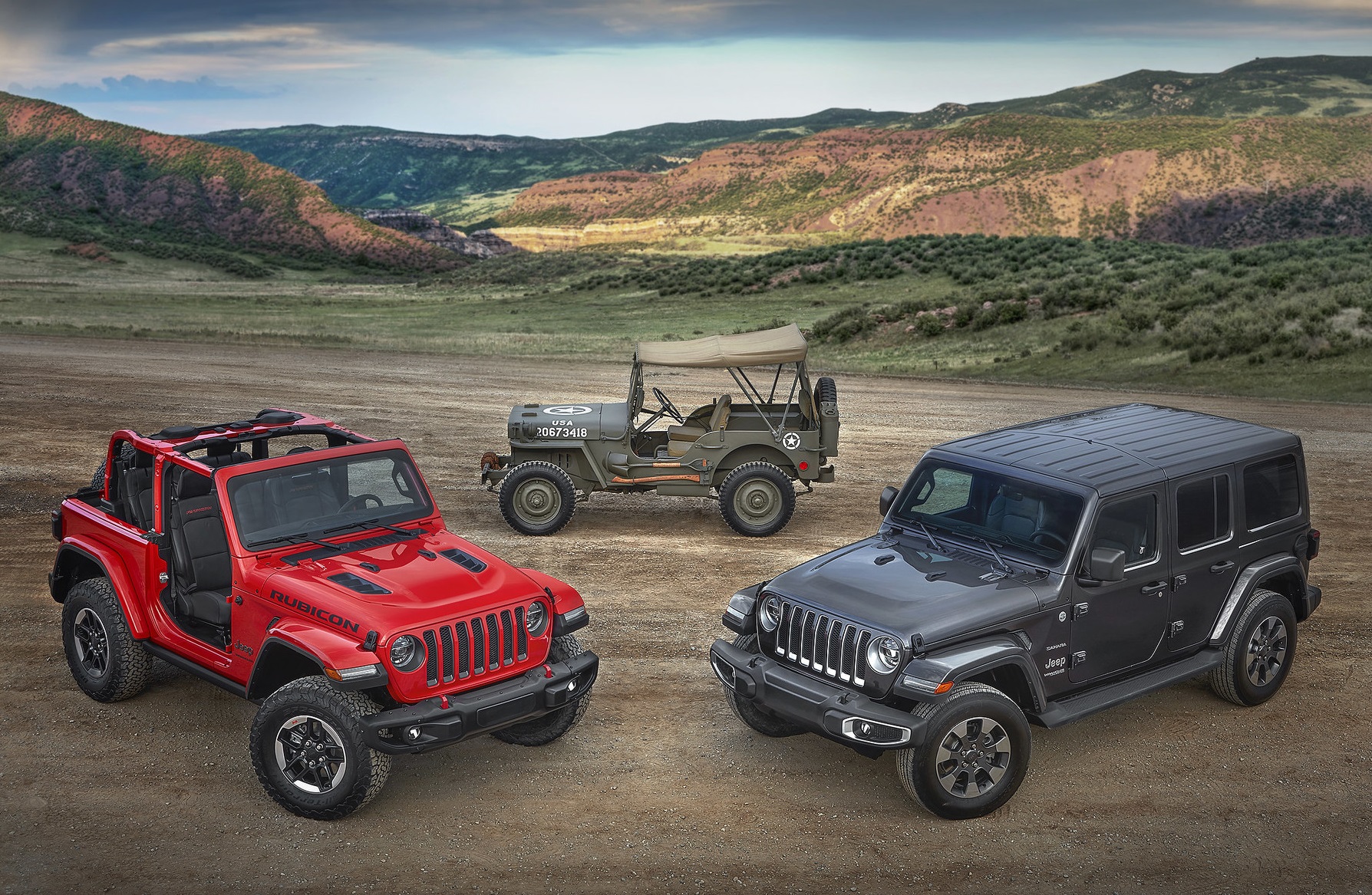
First Generation: Jeep Wrangler (YJ) – 1986 to 1995
Read the YJ Buyer’s Guide here
Introduced as a replacement for the Jeep CJ, the YJ marked a major step in Wrangler history. It retained the classic Jeep look but was more modern and comfortable than its predecessor.
Second Generation: Jeep Wrangler (TJ) – 1996 to 2006
Read the TJ Buyer’s Guide here
The TJ returned to the iconic round headlights, pleasing many Jeep purists. The TJ built on the foundation laid by the YJ Wrangler, with a focus on improving off-road capability and on-road comfort. The iconic Rubicon trim was also introduced in 2003 as part of the TJ series.
Third Generation: Jeep Wrangler (JK) – 2006 to 2018
Read the JK Buyer’s Guide here
The JK was a complete redesign, with particular emphasis on a more robust body, fortified frame and refined suspension. The JK Wrangler embraced more technology and amenities to enhance the overall driving experience. This generation saw the introduction of the four-door Unlimited model, broadening the Wrangler’s appeal as a family vehicle.
Fourth Generation: Jeep Wrangler (JL) – 2018 to Present
The JL is the latest generation of the Wrangler, offering the most refined design and technology package to date. It continues to build on the Wrangler’s off-road heritage while introducing more comfort and advanced safety features, making it more suitable to the demands of modern-day driving.
History & Overview of the YJ Jeep Wrangler
The Jeep Wrangler embodies the spirit of American freedom with its rugged design and off-road capabilities. It conveys a sense of unrestrained exploration and adventure across vast, open landscapes. However, Its popularity is not limited to American shores. As far as SUVs are concerned, the Wrangler nameplate is arguably one of the most recognizable in the automobile industry.
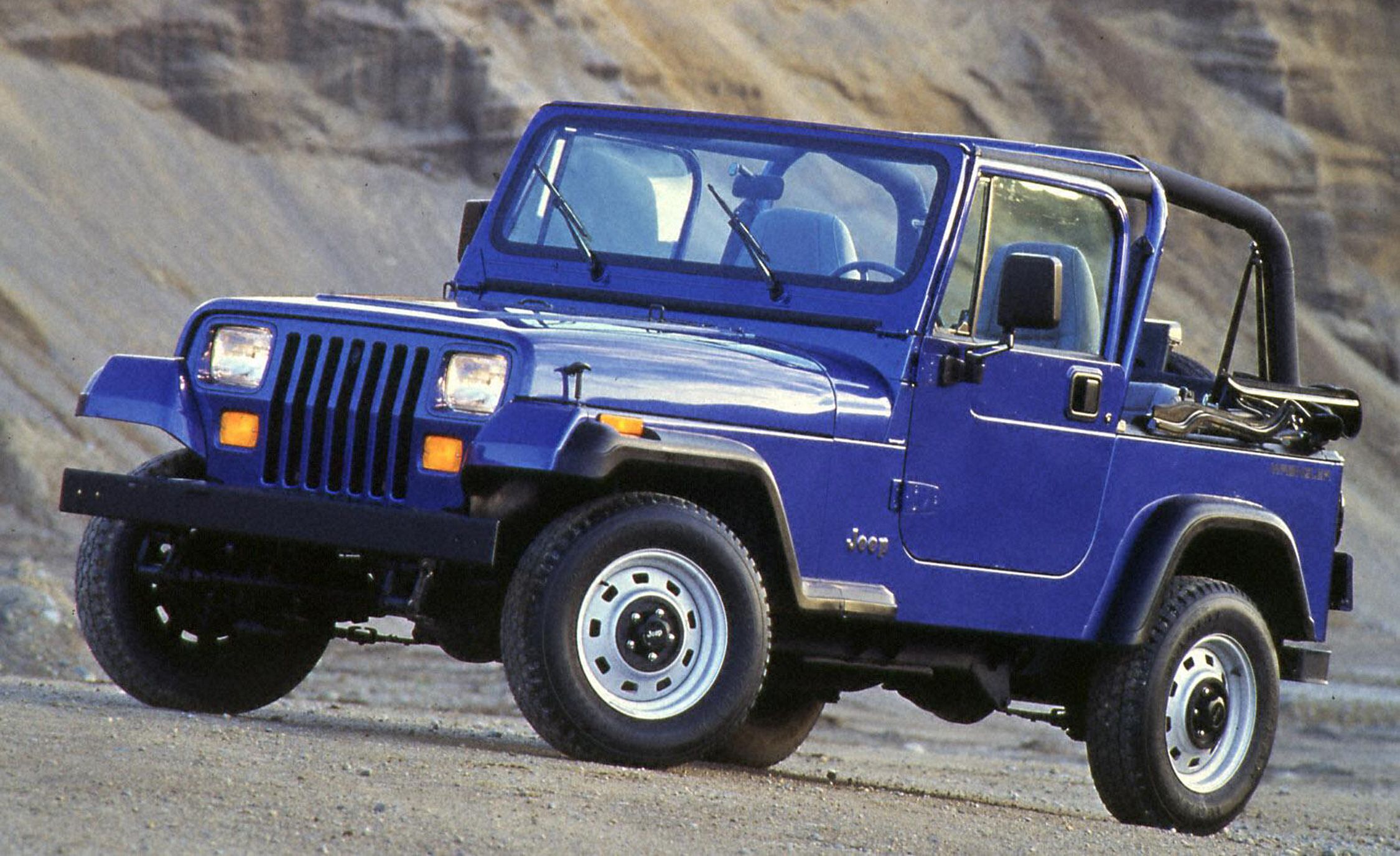
The first Wrangler officially debuted in 1986 at the Chicago Auto Show, but its origins can be traced to a much earlier time, during the Second World War. The US Army sought a capable four-wheel drive vehicle that could fulfill light reconnaissance duties on the battlefield. A company called Willys ultimately won the contract, and the Willys MB was born.

The hardy SUV quickly became hugely popular and a decisive factor on the war front. In his book Crusade in Europe, General Dwight D. Eisenhower mentioned the Jeep as a crucial equipment vital to Allied successes in Africa and Europe.
After the War, Willys trademarked the Jeep name and modified the MB for civilian use. The first one, dubbed the CJ (for Civilian Jeep), rolled off the assembly line in 1945. It would become the world’s first mass-produced four-wheel drive vehicle, with over 1.5 million units built in total.
There were several revisions of the CJ jeep during its lifespan, including the CJ-5, CJ-6, CJ-7, and CJ-8 Scrambler. In 1986, the aging CJ chassis was eventually retired to make room for the Jeep Wrangler.
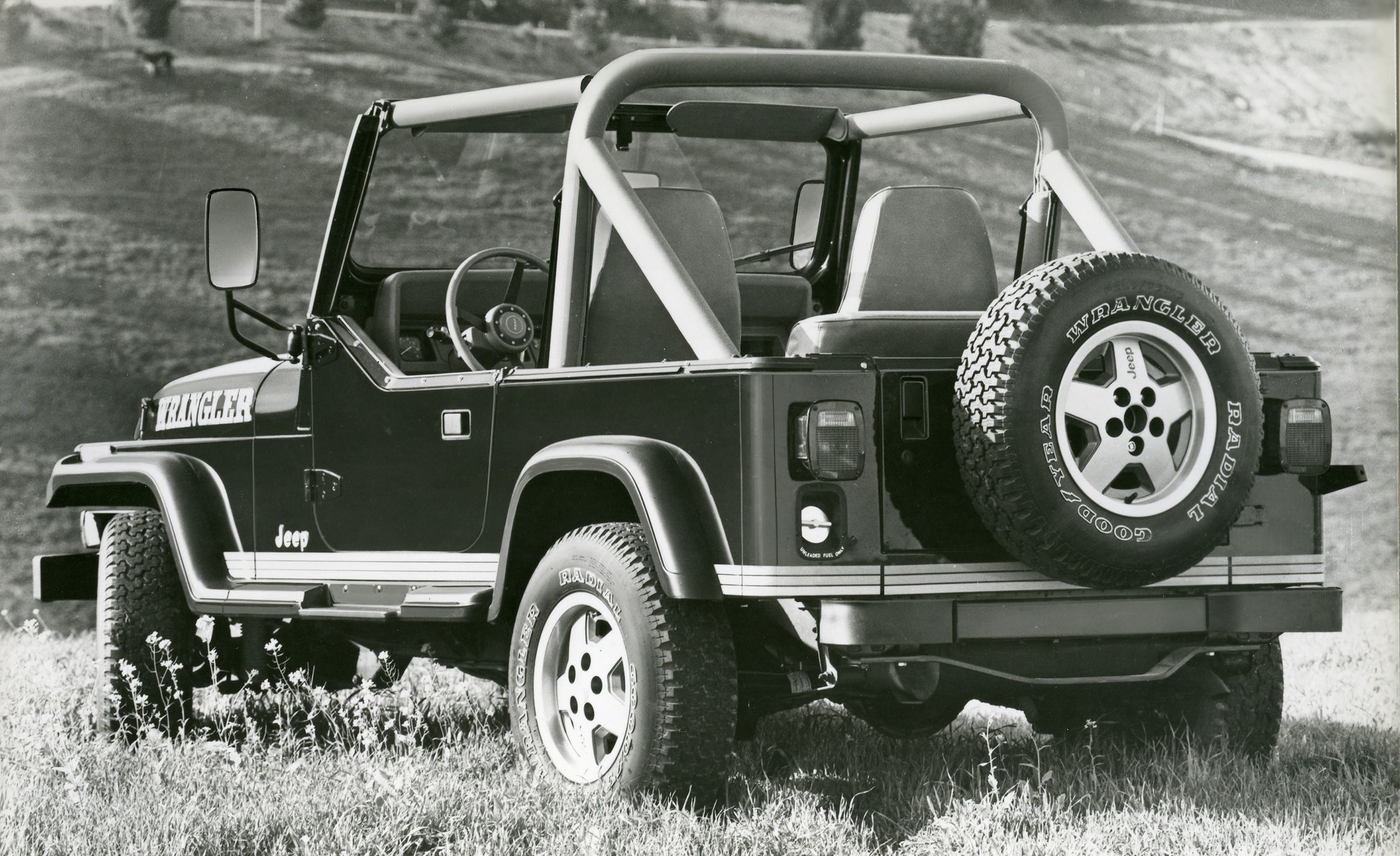
As mentioned earlier, the Jeep Wrangler YJ was launched in 1986. At the time, the company was under Renault’s ownership. By the following year, control had changed when Chrysler acquired Renault’s stake in the American Motors Company.
Over 630,000 Wrangler JY models would eventually roll off the assembly line over eight years, underscoring the sturdy vehicle’s popularity.
Specifications
Though not a direct descendant of the CJ, the first Jeep Wrangler YJ did share some similarities. They included the open bodywork, body-on-frame design, and solid axles. The Wrangler became a huge commercial success and has spawned three generations after the YJ with no signs of slowing down.
Engine
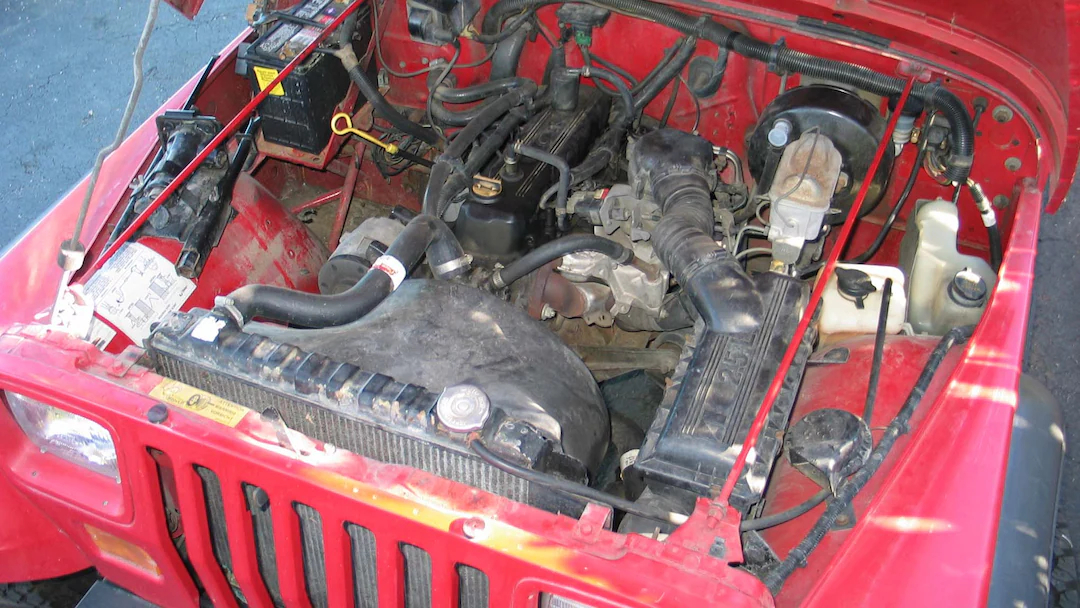
The Jeep Wrangler YJ launched with a choice of 2 engines, both sourced from AMC; no surprises there. The first was a 2.5-litre AMC150 inline-4 that initially made 135 lb-ft of torque. It was a modest output but one that still made the Wrangler YJ a capable off-roader. Those who wanted more grunt, especially on the torque end, could opt for the 4.2-litre AMC258 inline-6 option that increased available torque to 210 lb-ft.
| Engine | AMC150 | AMC258 |
| Bore x Stroke | 3.875 in X 3.1875 in | 3.75 in x 3.895 in |
| Displacement | 2.5 L | 4.2 L |
| Compression Ratio | 9.2:1 | 9.2:1 |
| Cylinders | 4 | 6 |
| Horsepower | 105 hp @ 5,000 rpm | 112 hp @ 3,000 rpm |
| Torque | 135 lb-ft @ 2,800 rpm | 210 lb-ft @ 2,000 rpm |
| Valve Configuration | OHV (Overhead Valve) | OHV (Overhead Valve) |
For the 1991 model year, Jeep swapped out the 4.2-litre unit for a different AMC-sourced inline-six. It was a fuel-injected 4.0-litre that boosted the output to 180 hp and torque to 220 lb-ft.
Body
The Jeep Wrangler YJ was an exclusively two-door model promoted as a more practical version of the Willys CJ it replaced. Yes, the open body style, boxy shape, and wheelbase carried over from the Willys CJ, but key differences also helped differentiate the Wrangler YJ.
The chassis was revised and updated with a wider track and slightly lower stance. The YJ retained the leaf spring suspension found in the Willys CJ. However, the springs were wider for improved ride comfort. Trackbar suspension links and anti-roll bars were also introduced to enhance overall handling and safety, reducing the risk of rollovers.
The Wrangler YJ boasted rectangular headlights, a unique design element that set it apart from all subsequent Wrangler generations, which would adopt round headlights.
Interior
Enhanced ride comfort was one of the main selling points of the Wrangler YJ. Describing the cabin space as luxurious might be a stretch; however, it was functional and durable, a true reflection of its practical nature.
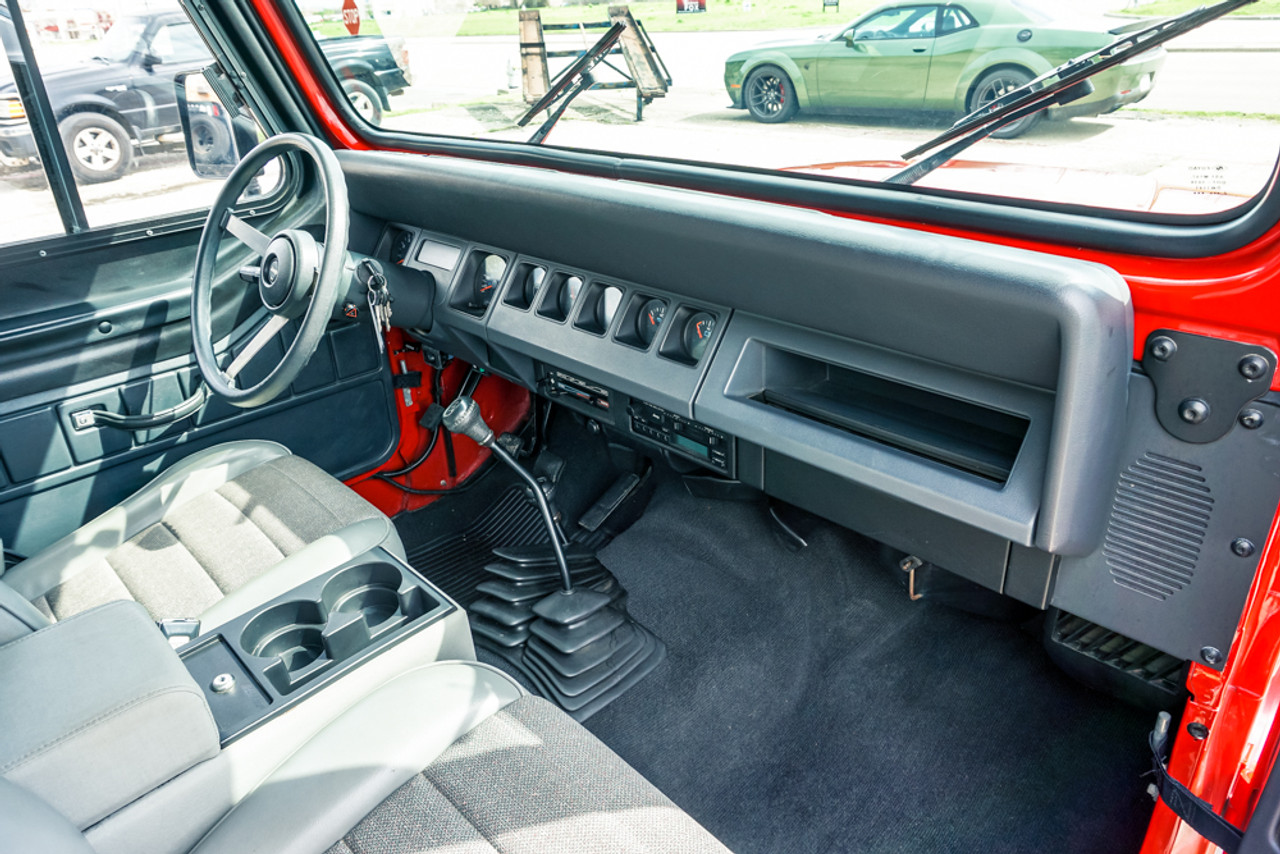
The seats, often cloth-covered, were designed for comfort and support during long trips and rugged off-road adventures. The dashboard features a simple, straightforward layout with large, easy-to-read gauges.
The YJ’s interior is characterized by Jeep’s signature open design, with a folding top and removable doors. This design allows for an immersive outdoor driving experience that contributes to the SUV’s charm and appeal.
Things to Look For
The last Jeep Wrangler YJ models were assembled in the mid-1990s, almost three decades ago now. It makes buying any YJ a serious proposition that requires careful and deliberate considerations.
Model year
During the construction period from 1986 to 1995, Jeep launched the Wrangler YJ in different versions. In addition to the base trims, the standard S and SE models, there were others like the Wrangler Renegade, Islander, Laredo, Sport, Sahara, and Rio Grande. Each model variant came with its own options list, equipment level, and upgrades. The Wrangler Islander, and Renegade were special edition models that built upon the offerings by the base, S and SE trims. The Islander was inspired by the Jeep CJ-7 Islander and featured a unique exterior colour scheme, graphics and various interior accents. The Renegade package included large fender flares, larger tires, painted front and rear bumpers, side steps and decals.
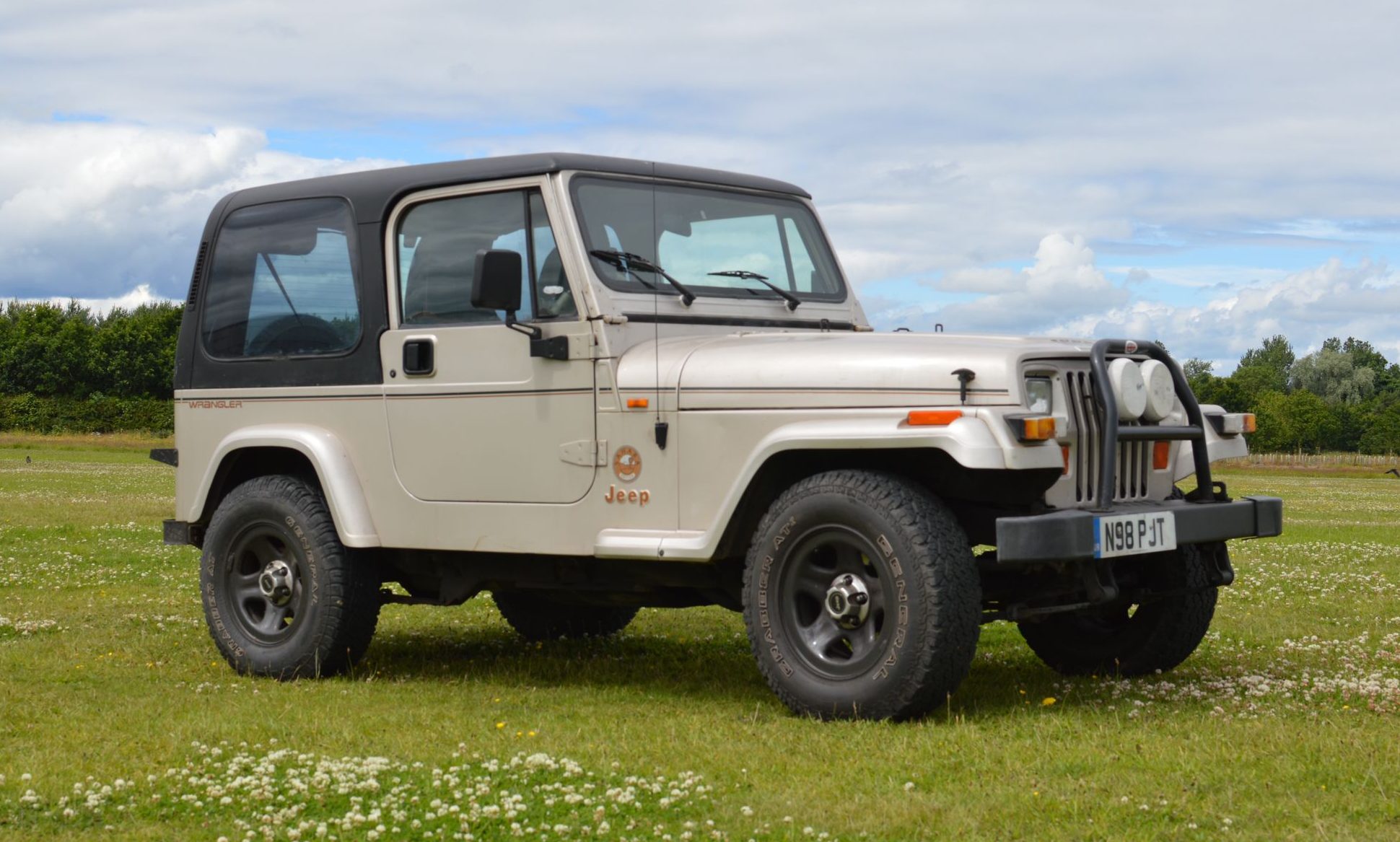
The Wrangler YJ Sahara was a top-of-the-line luxury trim with features like trail-cloth seats with storage pockets and a premium sound system (at the time, this meant an AM/FM stereo with cassette player and a rear speaker sound bar). For the exterior, the Sahara models got alloy wheels, front-bumper-mounted fog lights, painted fender flares and Sahara Edition decals on the front fenders.
Choosing the right model year and configuration would typically depend on individual preferences and needs.
Physical condition
It is crucial to determine the physical condition of the YJ to avoid costly surprises after taking possession. Wranglers are hardy off-road vehicles, purpose-designed for extremely rugged driving. People do not usually buy Wranglers for grocery runs so it is important to carry out a rigorous check to ascertain the physical condition before purchase.
Jeep Wranglers, known for their rugged durability, can still succumb to the elements over time. Issues like rusty body panels, particularly in areas exposed to moisture like the wheel arches, rocker panels, and the underside of the body, can be spotted with a quick check. Scratched paintwork and dents can also be spotted quite easily.
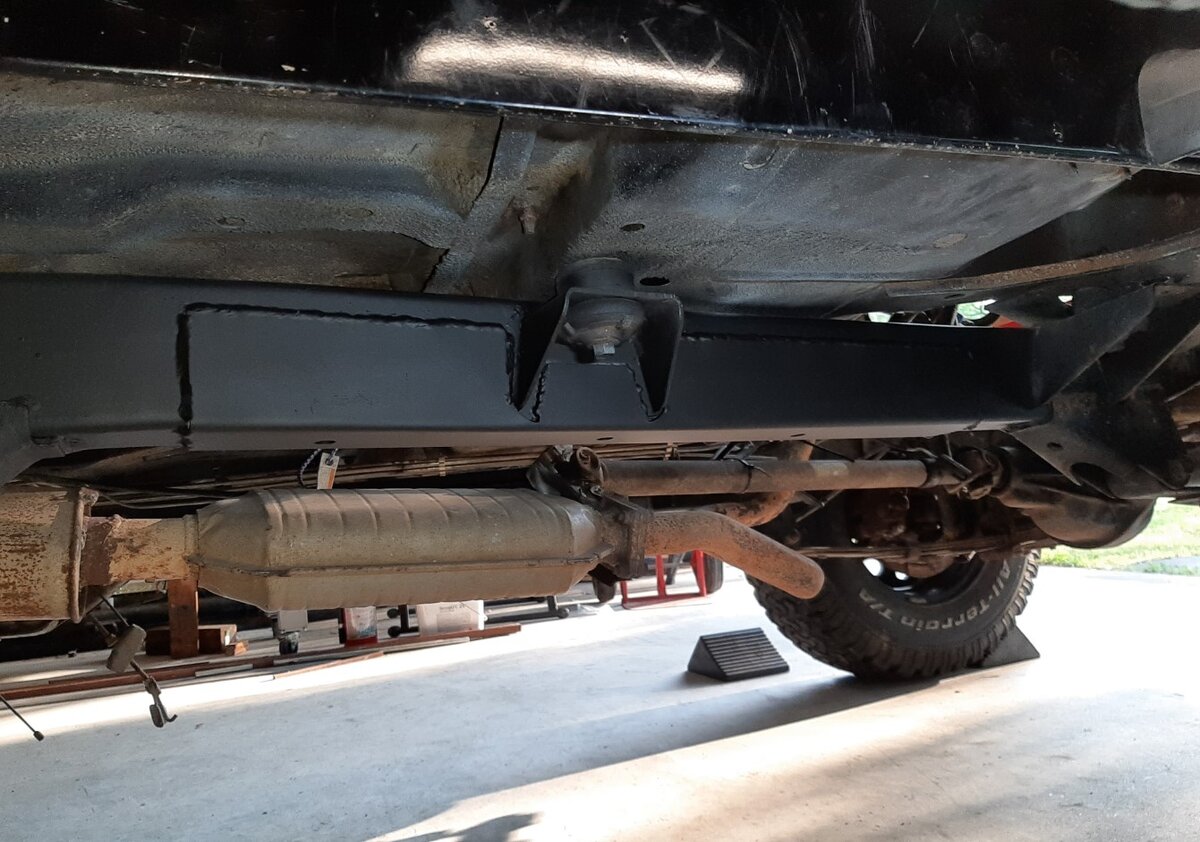
However, a thorough inspection by a professional is recommended as it can help reveal hidden gremlins like worn bushings in places like the control arm or track bar, faulty sensors, engine problems, rough weld seams indicative of frame damage in the past, etc. A comprehensive check will guide an informed decision and minimize the risk of acquiring a classic vehicle that requires extensive repairs or restoration by investing time and effort into a pre-purchase inspection.
Recalls
Where possible, the Wrangler YJ’s recall history should be researched thoroughly by popping in the VIN number on sites like nhtsa.gov or repairpal.com. The Jeep Wrangler YJ series has been the subject of major recalls in the past. For example, in 2002, there was a recall that potentially affected over 316,000 vehicles with manual transmissions from the 1990 – 1995 model years. The parking brake on the affected vehicles could release without warning and cause the vehicle to roll away from its parked position.
Carrying out your due diligence may help shed light on the vehicle’s recall history and provide more information on its actual condition and quality. It could also reveal particularly problematic model years that are best avoided altogether – like the 1994 model year with 4 different safety recalls.
Service history
Even more important than recalls is the service history. It’s a significant risk purchasing a YJ example without a service record that at least details all the major work done on the car in the past. Generally, opt for well-maintained vehicles with a complete service history. They tend to be more reliable in the long term.
Exhaust smoke
The colour and thickness of the exhaust smoke can be indicative of different underlying problems such as a misfiring engine, broken catalytic converter, fuel injection problems, etc.
Common Issues
Rust
The steel frame of the Wrangler YJ is particularly susceptible to rust. You may need to pay particular attention to areas around the skid plate, rear shackles, floor pan, cross member in front of the gas tank and behind the steering box. They are all prone to rust due to exposure to road salt, moisture and debris, all of which can accelerate corrosion.
Take the skid plate, for instance. It is located on the underside of the vehicle where it helps protect the vital components of the drivetrain by shielding it from damage caused by rocks and other obstacles on the road. A severely rusted skid plate, for instance, can compromise its ability to protect components like the oil pan, transmission and even the transfer case.
Generally, the severity of rust can be indicative of the intensity of previous usage and how well the vehicle was cared for by its owner.
Electronic carburetor system
The hydraulic computer-controlled Carter carburetors, especially those featured in earlier models (before 1991), were prone to various problems.
The Carter carburetors were an important component of the Wrangler YJ’s fuel delivery system. They helped mix air and fuel in precise proportions, necessary for optimal engine performance. While these carburetors were generally reliable, earlier models, produced before 1991, were known to suffer from certain issues.
A common problem was a rather annoying tendency to develop leaks, particularly around the throttle shaft seals and float bowl gaskets. This could lead to fuel spillage and reduced engine power. The carburetors were also known for worn throttle shafts that could trigger engine misfires and loss of power.
Transmission
The 5-speed Peugeot BA 10/5 transmission on the early Jeep Wrangler YJ models was infamous for being notoriously unreliable and would break under any condition that required frequent shifting. It is the transmission with the shortest run in Jeep history – from 1987 until mid-1989. Opting for later models with the Aisin AX-15 transmission may be a better decision.
Condition of the removable hard/soft top
Hard tops are prone to leaks, especially around the seals and seams. Soft tops should also be inspected for leaks and tears in the fabric.
Electrical problems
The YJ’s electrical system can be finicky. Issues like faulty sensors and blown fuses are quite common and can affect the functioning of various parts like the lights, windows and engine.
Steering
A wobbling steering feel could be indicative of a worn suspension or defective bits in the steering linkage components.
Purchasing Recommendation
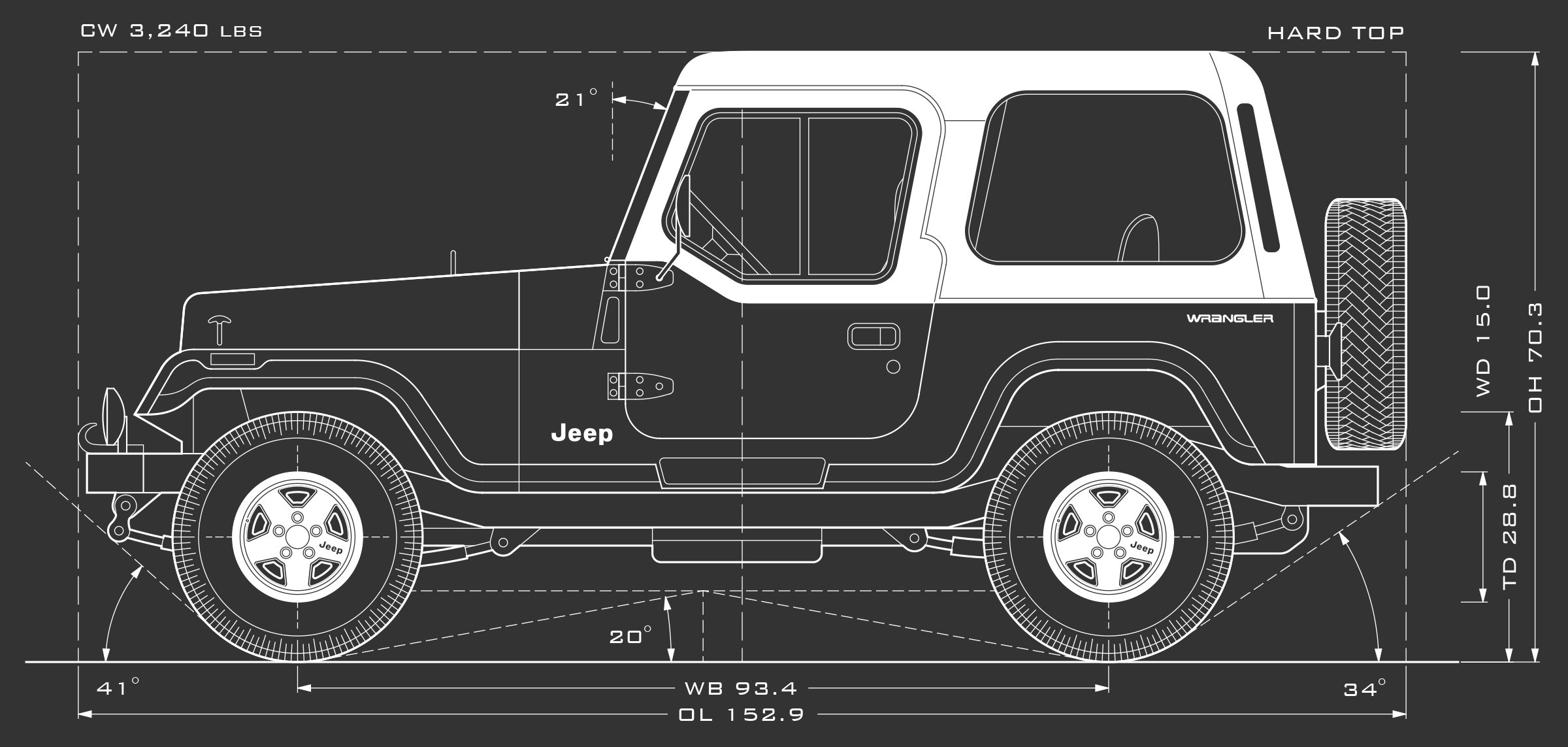
The 1991 model year is often praised for the introduction of the 4.0-litre inline-6 engine with more power and torque. Soon after, the interior was updated with a redesigned dashboard and more comfortable seats.
Generally, a ’91 or newer model year is considered a great option when shopping for a classic Wrangler YJ. The 1995 models stood out in particular because of the larger U-joints and all the other newer bits they got.

It should be noted, though, that selecting the model year to purchase is often down to personal preferences or specific needs. For example, a buyer interested in a project build may not be too particular about the available options.

